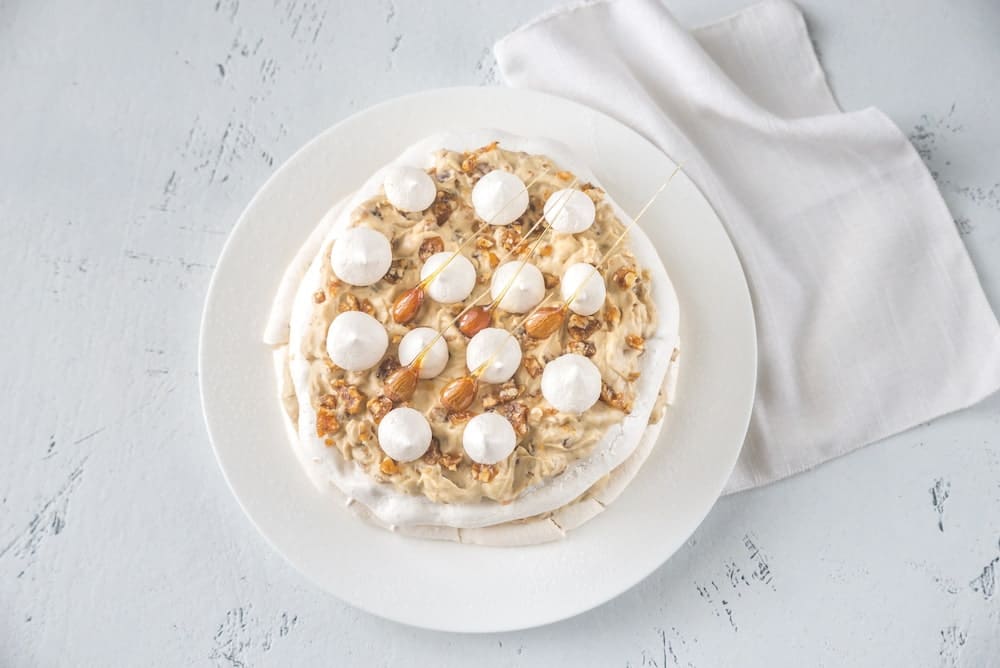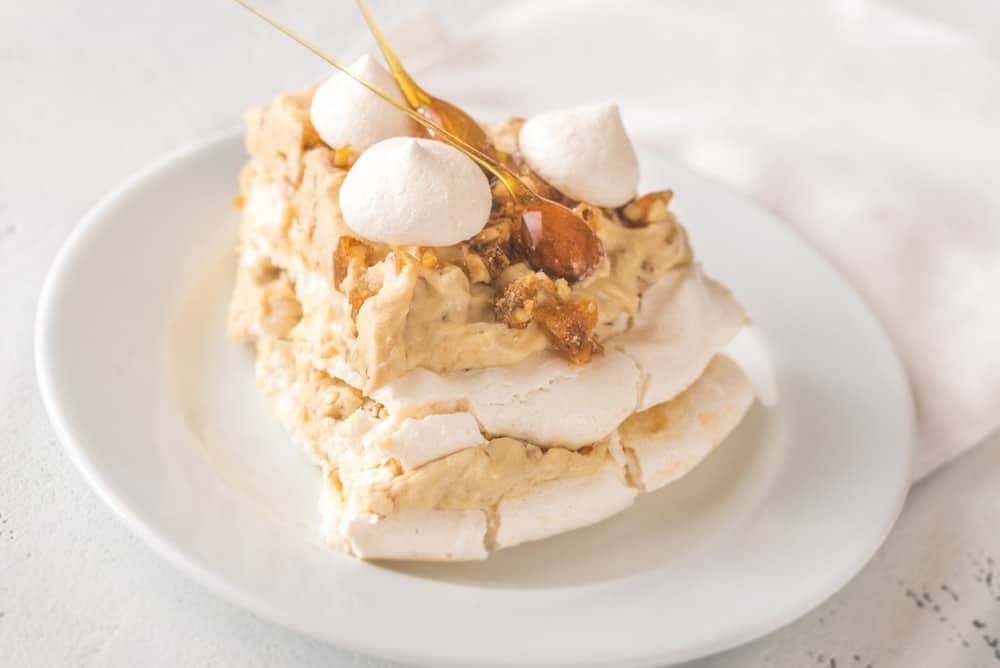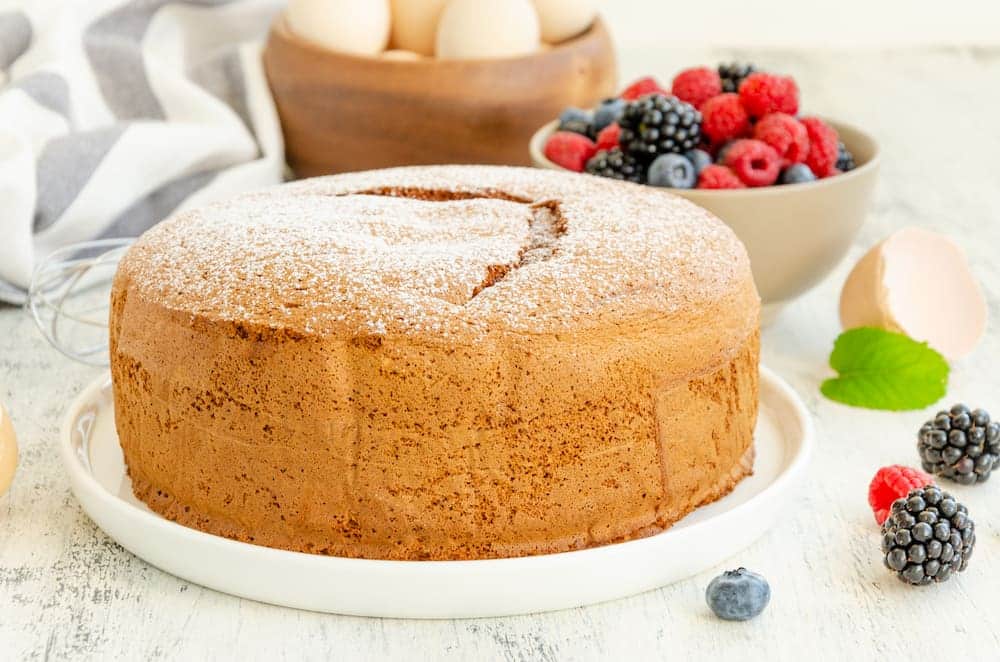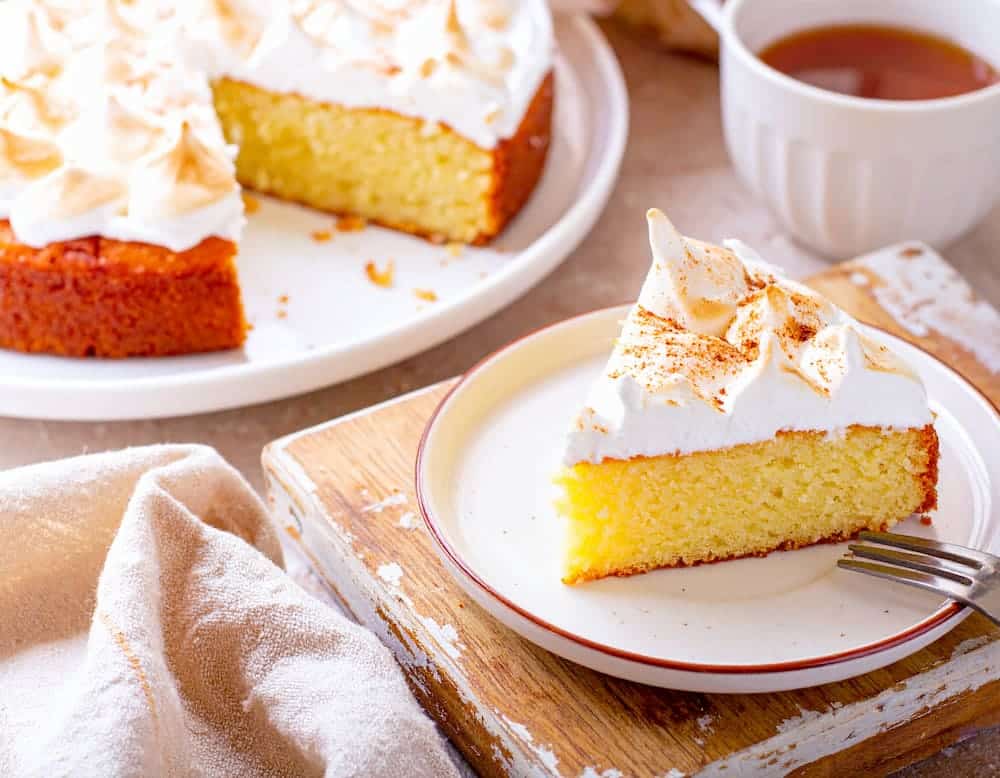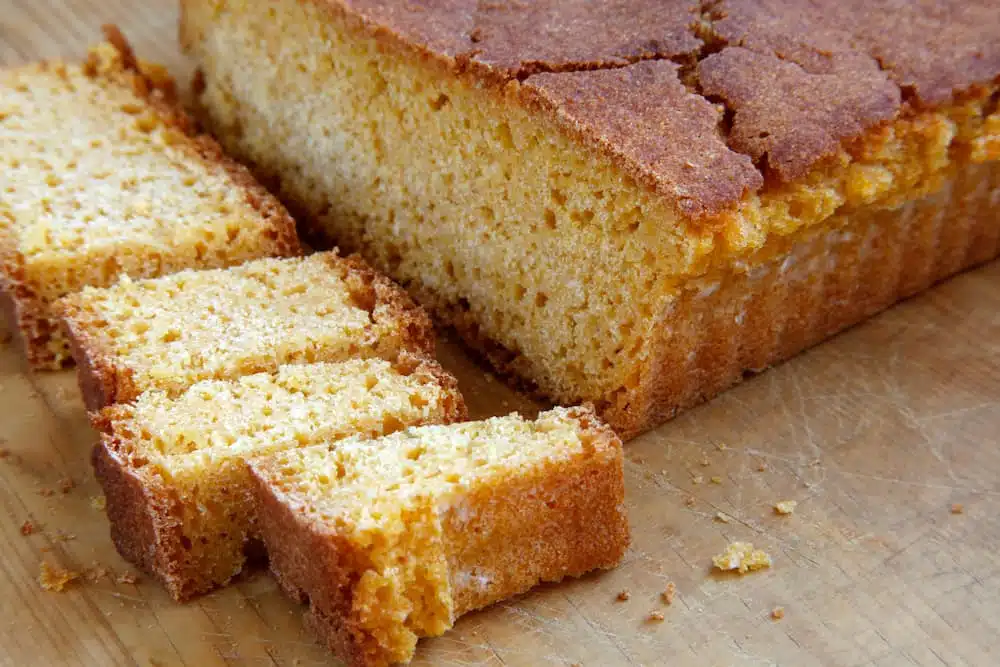Welcome and welcome to Paulina Kitchen! Attention, pastry lovers, today we come to talk about a jewel who, if they did not know it, is about to change their lives (Epa!) The Dacquoise . Yes, so with elegant "CQ" in the middle and everything.
This wonder of the French pastry combines the crispy of a French meringue with the roasted flavor of the ground nuts . But be careful that it is not just to beat clear and cross your fingers to leave.
There are techniques and there are secrets that we are going to share here. In addition, we are going to see everything about the almond dacquise , with an easy and realizable recipe with tips not to fail.
Content table
About the Dacquise
The Dacquise (it is pronounced "Dacuáz") is a dessert that seems simple, but has its science. It is a French meringue disk or sheet (because there are several types of meringues ) mixed with dried fruits, such as almond or hazelnut flour.
Its texture is unique: crispy on the outside , soft and slightly ciclose inside. Ideal to use as a cake base, or to intersperate in layers , combined with fruits, creams and sweets.
And the most beautiful thing about everything: the Dacquoise is one of those egg whites with egg whites that rescue those poor abandoned clear ones, which always remain from some preparation and we do not know well what to use them.
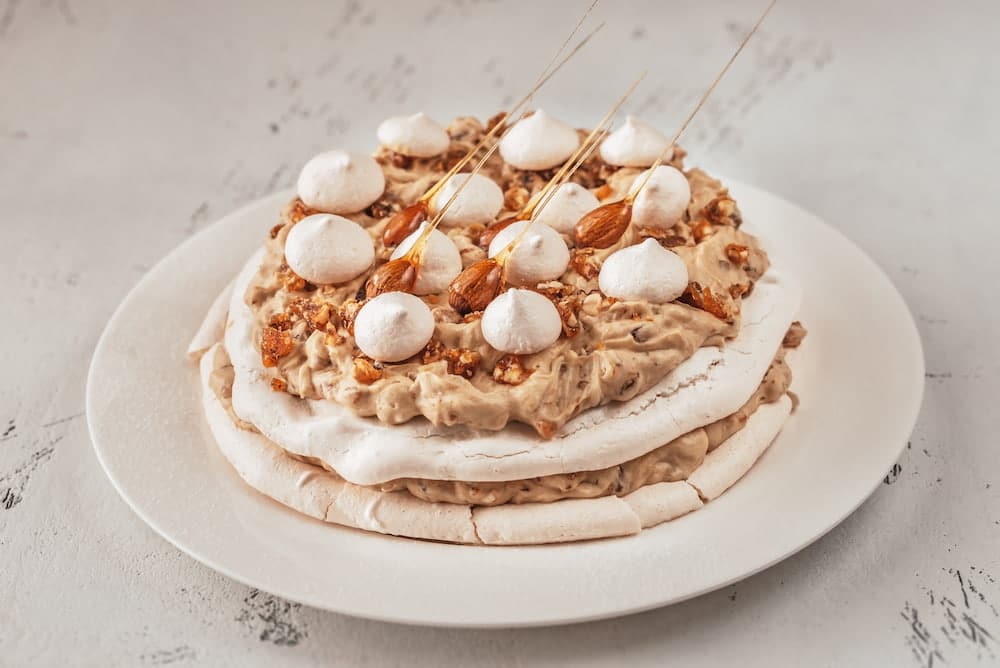
History and origin of Dacquoise
Dacquoise's recipe has its origin in the city of Dax , in southwest France . Hence his name: "Dacquise" means "of Dax."
According to pastry historians (who exist), the Dacquoise began as a dessert for the noble tables , back in the seventeenth century. A mixture of luxury, sophistication and that classic touch "à la Française" that makes anything chic.
Over time, it became popular and today is one of the favorite chefs bases to make from birthday cakes to restaurant desserts with star Michelin. Not bad for a merenguito, right?
7 characteristics that we love from Dacquoise's recipe
- Mixed texture: crispy outside, tender inside.
- Fruit flavor: haze of hazelnuts or almonds provides flavor and texture.
- Gluten Free Natural: When using almond flour , it is suitable for celiacs (check a separate filling, of course).
- Light but substantial: ideal for those who want light desserts , but with a lot of flavor.
- Versatility: Dacquoise can be used as a cake base , interspersed with creams or even eating it alone.
- Easy to do: With a little morning, you can find a way to make an easy recipe.
- Conservation: The Dacquoise cake without filling can be kept about 2 or 3 days in a hermetic container, at room temperature. If you are stuffed, you better keep it in the refrigerator and consume in the day.
How are the Dacquise and Pavlova
Although at first glance they may seem close cousins, the Dacquoise and the Pavlova have quite marked differences that are worth knowing. Pavlova is a dessert that is based exclusively on a very aerated French meringue the presence of nuts or other solid aggregates.
On the other hand, the Dacquoise incorporates ground nuts, such as almonds or hazelnuts , to the meringue mixture, which gives it a dense, slightly chewable texture and a toasted flavor that the Pavlova does not have.
While Pavlova is ideal for fresh and fruit desserts , Dacquoise is usually used as a base or layers within more elaborate cakes , accompanied by fillings such as cream, ganache or dulce de leche .
In summary: Pavlova is pure sigh, Dacquoise is a meringue with character.
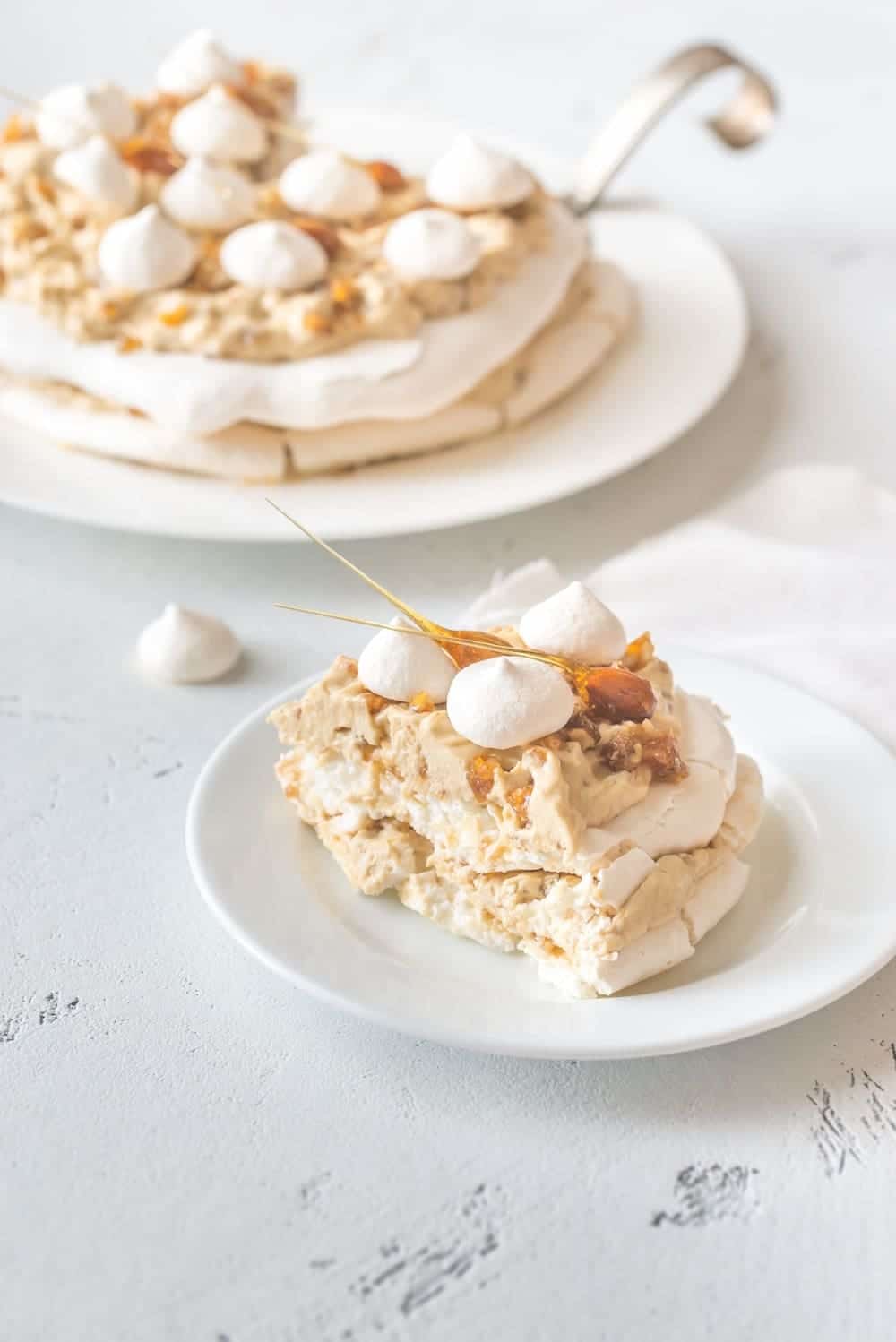
The favorite nuts for the Dacquoise cake
- Almonds: the infallible classic. If you are looking for a almond dacquise , this is the way. They have a subtle, sweet taste, and a perfect texture when they are processed well.
- Hazelnuts: For fans of intense flavor. Tasted hazelnuts have an irresistible perfume and combine wonderful with chocolate or praline fillings. A hazelnut dacquise + chocolate ganache = insured success.
- Nuts: Ideal for those who love a little more rustic and deep . Be careful that they are a bit more oily , so it is not necessary to pass with the grinding so that they do not release too much fat.
- Pistachos: the touch of total sophistication. Not only because of the divine green color that they give to the preparation, but because its unique flavor converts any dessert into high pastry. Of course: they are more expensive, so using them is a small luxury.
- Cajú chestnuts (anacardos): If you are looking for something different and slightly exotic, try with cajú. soft and buttery flavor is great with stuffed with tropical fruits, such as maracuyá .
3 secrets so that the nuts of the Dacquoise are perfect
- Always toast before using: about 8-10 minutes in the middle oven (160-170 ° C) are enough. Tostado enhances the flavor and dries natural oils a bit, causing them to be better processed.
- Carefully process: the idea is not that it is a paste, but a finite flour. The ideal is to process in short pulses and if it begins to cake, you can add a teaspoon of impalpable sugar (icing sugar) to absorb moisture.
- Sormize the flour: it helps that there are no large lumps in the mixture and that the Dacquoise meringue is integrated more even.
The best filling options for Dacquise
- Dulce de Milk: It is a classic that never fails, especially in Latin American lands. The sweetness and creamy texture of the dulce de leche combine perfectly with the Dacquoise merengue . Tip: Better to use sweet milk sweetness so that it does not overflow.
- CHANTILY CREAM: If you are looking for something cooler and light, the Chantilly cream is ideal. Its softness balances the sweetness of the dacquise and allows to incorporate fresh fruits such as strawberries, raspberries or mangoes in the assembly. A perfect option for summer desserts.
- Chocolate ganache: For chocolate lovers, a ganache is a safe bet. Semi bitter chocolate can be used so as not to empha, or encourage a white chocolate ganache for a more delicate and sweet dessert.
- Fruit mousse: Another spectacular filling is light mousses , especially acidic fruits such as mango mousse , passion fruit, lemon or raspberry .
- Butter cream ( buttercream ): for those who love well loaded desserts, a good buttercream can be an excellent choice. Of course: choose a version not too cloying or flavored with coffee, vanilla or liquor to add a gourmet touch.
The 10 commandments to prepare the best Dacquise
- Beating the whites at room temperature: it is not a whim. The cold whites take much more to mount and do not reach the same volume.
- An intelligent shake: start beating the whites at low speed. This helps form more stable air bubbles. When they are already foamy, just there raising the speed.
- The sugar from a little : nothing to throw all the sugar of one. You have to add it in the form of rain , slowly and in several batches, so that the meringue takes strength and brightness.
- Firm but not dry meringue point: the meringue must be firm, make peaks that do not fall, but stay wet, like a dense cream.
- Small dry: almond flour and impalpable sugar have to be sifted yes or yes. This avoids lumps that then ruin the perfect texture of the Dacquoise. And in addition, it facilitates mixing without the clear ones.
- ENVOLVENT MOVEMENTS: When the dryness is added to merengue, the blender must be forgotten. Grab a spatula and mix with enveloping movements, from the bottom up, turning the bowl. The idea is to keep all that air that cost so much to obtain.
- Even discs: A truquito is to draw on the paper butter the size we seek to achieve. Then turn the paper (so that the pencil does not touch the dough) and there put the meringue. Thus more even and professional records come out.
- Baked: Dacquoise's recipe is cooked in the middle oven (170ºC) for between 20 and 30 minutes. The idea is to lose moisture without browning too much . If the oven is very strong, it is taken outside and is raw inside.
- Let cool in the oven: when the oven goes out, leave the dacquise inside, with the door barely ajar. Thus he finishes drying and does not suffer an abrupt change of temperature that could crack or moisten it.
- Build the dessert at the time of serving: The enemy is moisture! The Dacquoise is crispy thanks to its dryness. If you fill a long time before, absorb the moisture of the filling and lose that magic. Ideally, assemble the cake or dessert for a little while before serving.
Follow on Instagram ( here )
and on YouTube that I upload new recipes every week ( click here )
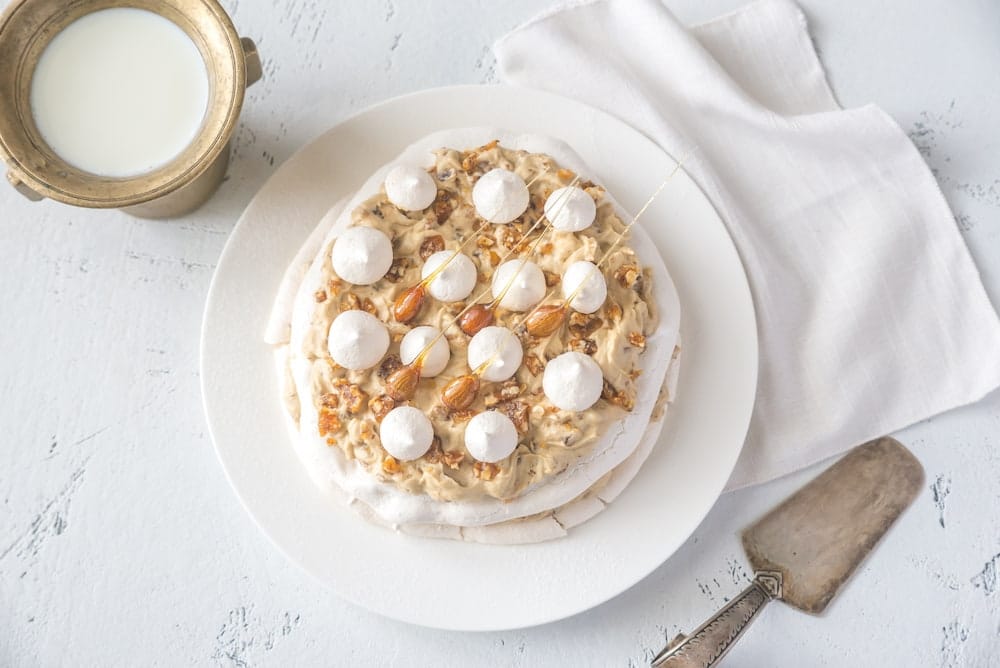
Almond Dacquoise Recipe
Yield: 2 approximately 22 cm albums (or 3 smaller)
Preparation time: 45-50 minutes
Ingredients
- 150 g of egg whites (approx. 5 clear)
- 150 g of common sugar
- 150 g of impalpable sugar (icing sugar)
- 150 g of almond flour (they can be other nuts)
- 1 pinch of salt
How to do Dacquoise step by step
- Preheat the oven at medium temperature (160-170 ° C).
- Beat the whites with blender and a pinch of salt until they spoke.
- Add the rain in the form of rain and continue beating until firm meringue.
- Mix almond flour with impalpable sugar (save a little to the end) and sift the mixture twice to ensure that it is well aerated.
- Integrate the dry to merengue with enveloping movements with the help of a spatula, until a homogeneous and light preparation is achieved.
- Place the mixture in a sleeve and build the discs on plates with butter paper. If manga is not available, draw the circles on the opposite side of the paper and extend the mixture following the contour.
- Sprinkle with reserved impalpable sugar and bake for approximately 20-30 minutes, until they are dry to the touch and barely golden.
- Let cool completely before manipulating. Use as a base and fill with fruits, creams, dulce de leche or ganache.
